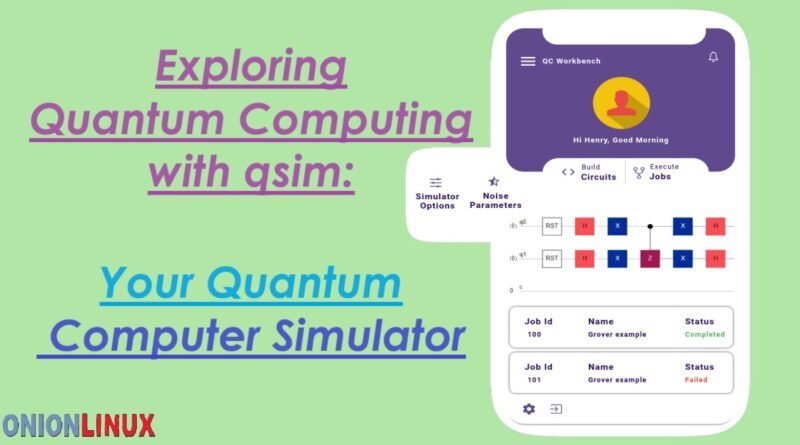Exploring Quantum Computing with qsim: Your Quantum Computer Simulator
Welcome to the world of quantum computing! In this blog post, we will explore the fascinating field of quantum computing and introduce you to a powerful tool called Quantum Computer Simulator, or qsim for short.
What is Quantum Computing?
Quantum computing is a revolutionary approach to computing that leverages the principles of quantum mechanics to perform complex calculations at an unprecedented speed. Unlike classical computers that use bits to represent information as either 0 or 1, quantum computers use quantum bits, or qubits, which can exist in a superposition of both 0 and 1 states simultaneously.
This ability to exist in multiple states simultaneously allows quantum computers to perform parallel computations and solve problems that are currently intractable for classical computers. Quantum computing has the potential to revolutionize various industries, including cryptography, optimization, drug discovery, and more.
Introducing qsim: Your Quantum Computer Simulator
While real quantum computers are still in their early stages of development and are not yet widely accessible, qsim provides a way for researchers, students, and enthusiasts to explore and experiment with quantum algorithms and simulations.
qsim is a powerful tool that allows you to simulate the behavior of a quantum computer on a classical computer. It provides a user-friendly interface to design and run quantum circuits, visualize the quantum states, and analyze the results.
Key Features of qsim
Here are some common features of qsim:
- Quantum Circuit Design: qsim allows you to design quantum circuits using a simple and intuitive graphical interface. You can add gates, control qubit states, and create complex quantum algorithms with ease.
- Quantum State Visualization: With qsim, you can visualize the quantum states of your simulated circuits. This feature enables you to gain insights into the behavior of quantum systems and understand the effects of different gates and operations.
- Simulation and Analysis: qsim provides a simulation engine that accurately simulates the behavior of quantum circuits. You can run your circuits, analyze the results, and compare them with theoretical predictions.
- Algorithm Exploration: qsim comes with a library of quantum algorithms and examples that you can explore and experiment with. From Shor’s algorithm for factorization to Grover’s algorithm for search, qsim allows you to understand and implement various quantum algorithms.
Getting Started with qsim
To get started with qsim, simply visit the qsim website and download the simulator. The installation process is straightforward, and qsim runs on most operating systems.
Once you have qsim installed, you can start exploring the provided examples, create your own quantum circuits, and unleash the power of quantum computing on your classical computer.
Conclusion
Quantum computing is an exciting and rapidly evolving field, and qsim provides a valuable tool for anyone interested in exploring this fascinating technology. With its user-friendly interface, powerful simulation capabilities, and extensive library of algorithms, qsim is a must-have for researchers, students, and enthusiasts alike.
So, what are you waiting for? Dive into the world of quantum computing with qsim and unlock the potential of this groundbreaking technology!
